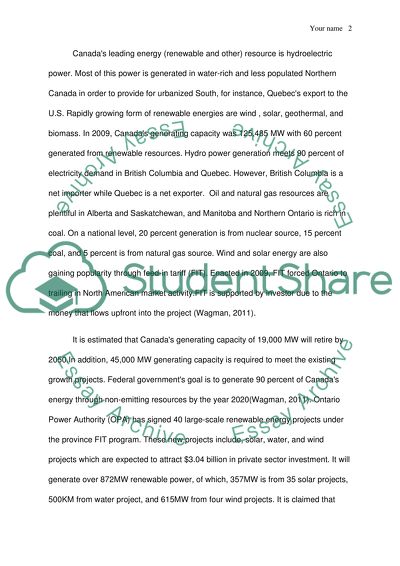Renewable Energy in Canada Essay Example | Topics and Well Written Essays - 1000 words. Retrieved from https://studentshare.org/english/1461773-renewable-energy-in-canada
Renewable Energy in Canada Essay Example | Topics and Well Written Essays - 1000 Words. https://studentshare.org/english/1461773-renewable-energy-in-canada.


